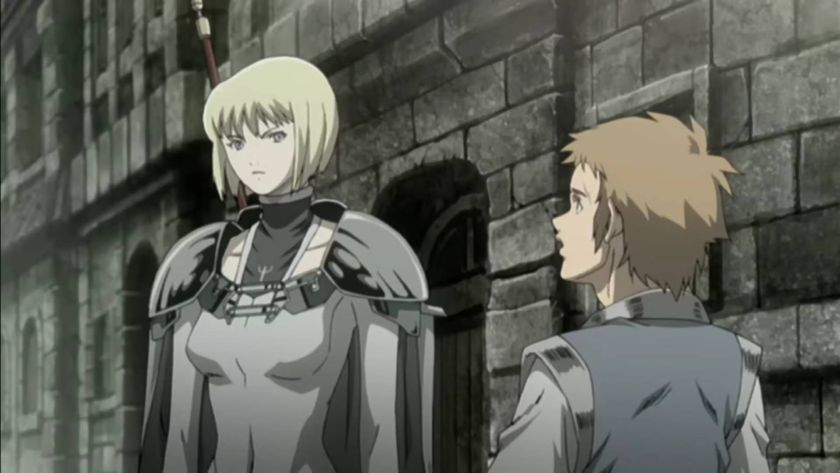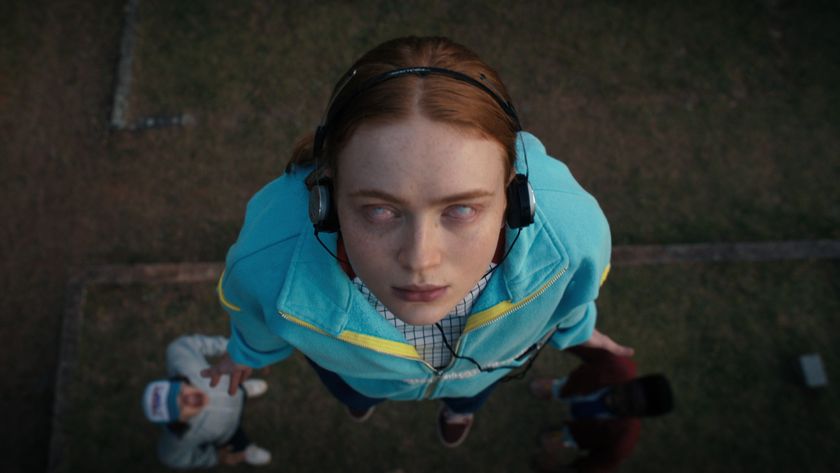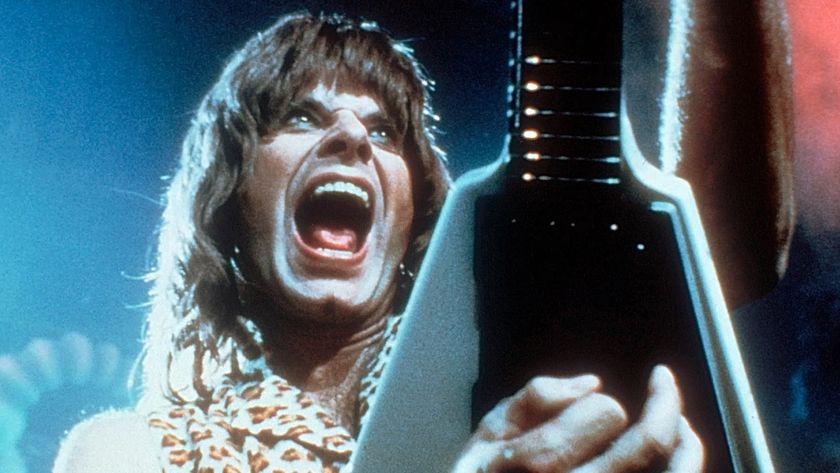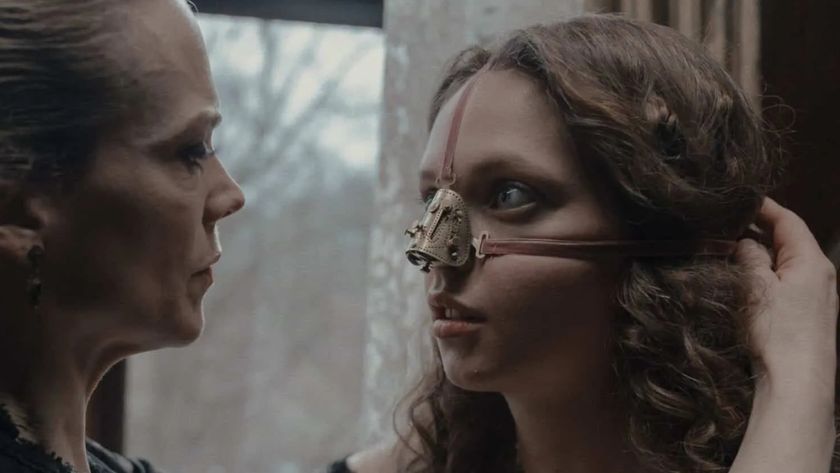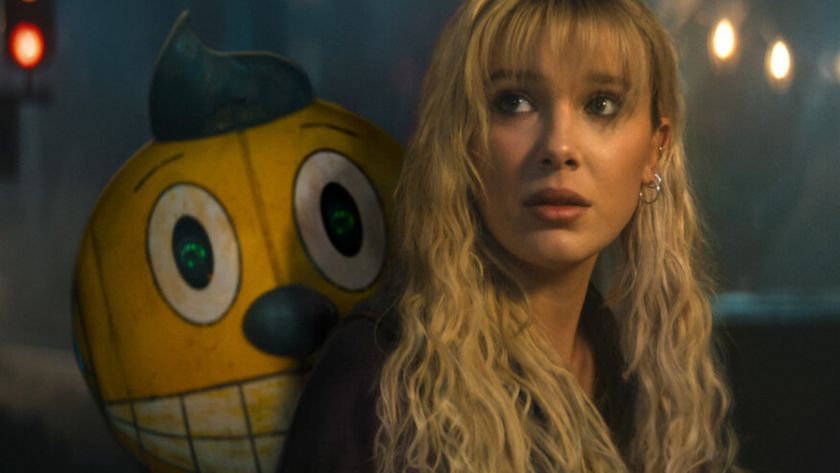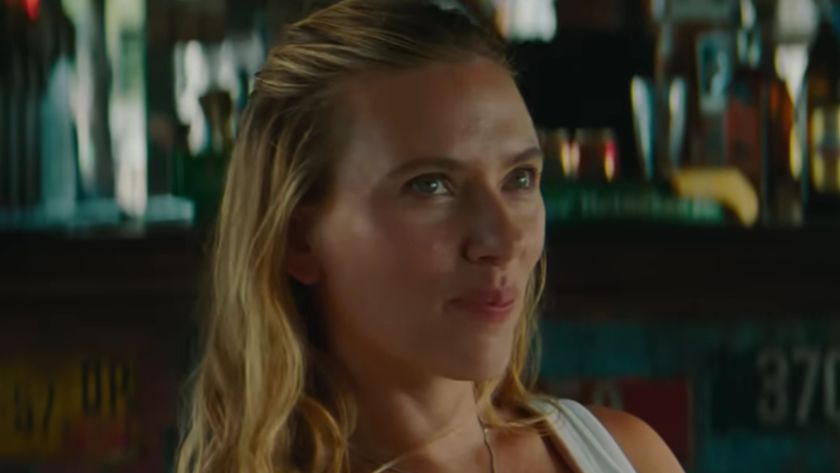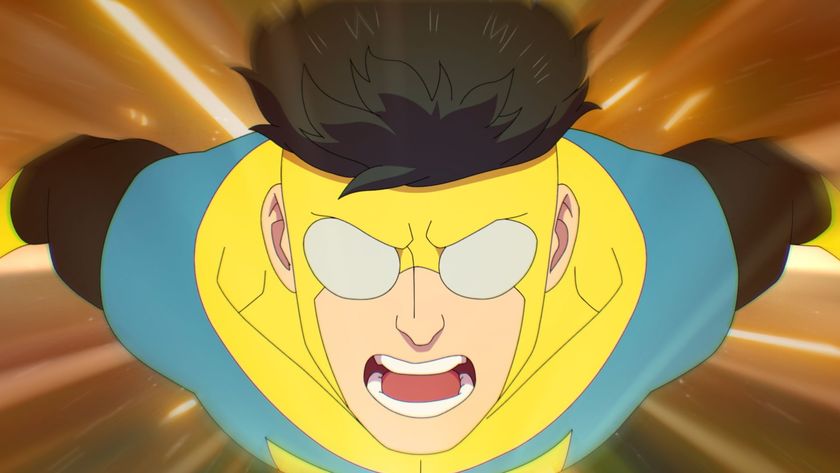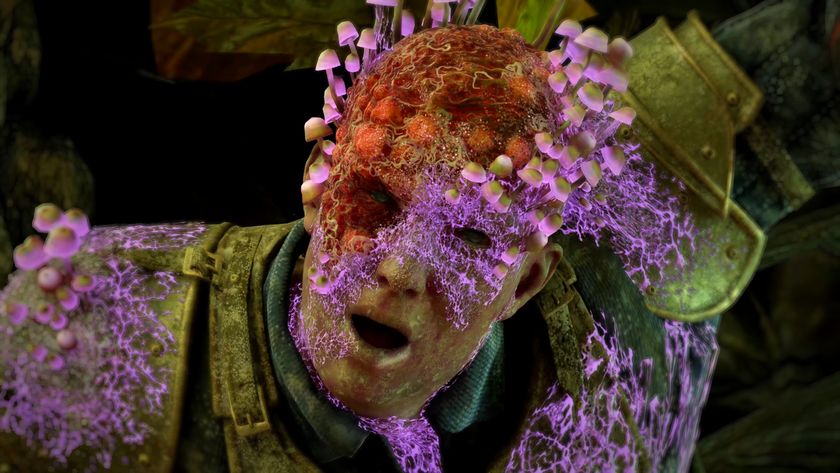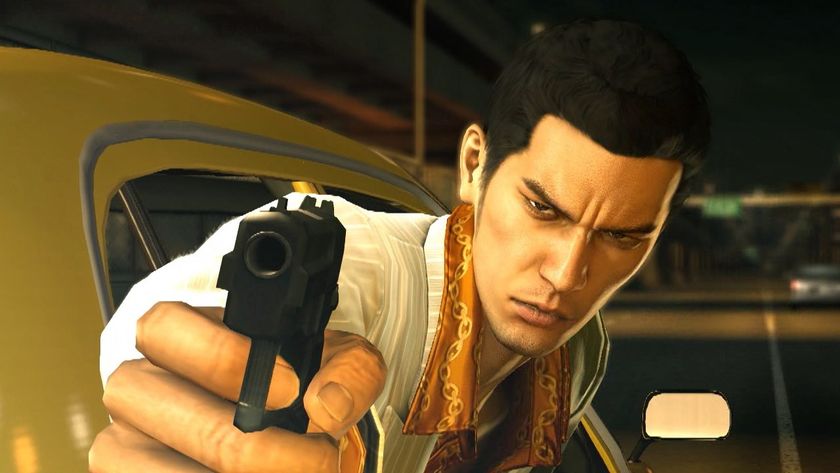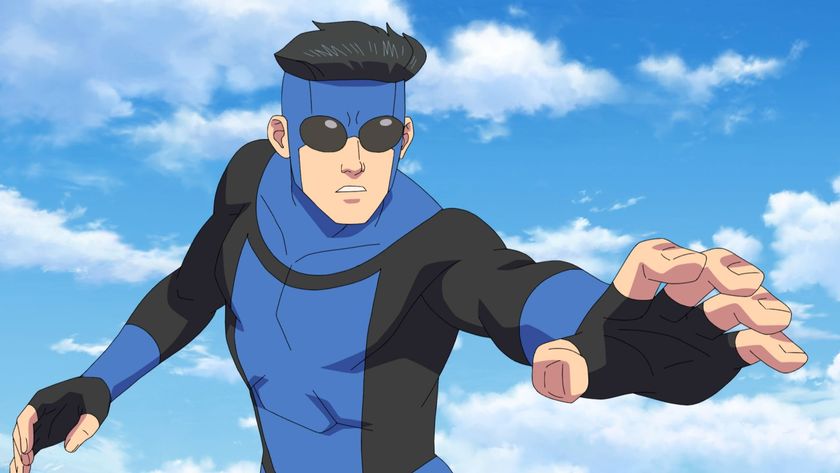Venice 2010 Daily Blog
Day 10: Giamatti and the Golden Lion
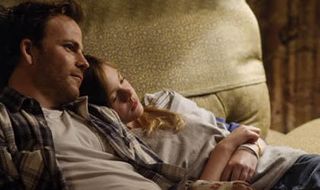
Sofia Coppola’s new drama Somewhere has been awarded the top prize at the Venice Film Festival.
The drama, which features a stellar turn from Stephen Dorff as the layabout father of Elle Fanning, surprised attendees as it was declared the best of the fest, trampling competition from favourites like Black Swan.
Not only that, but the festival jury - who were led by geek titan Quentin Tarantino - were unanimous in their decision to give Coppola’s film the much coveted shiny.
Other flicks that won big were Alex de la Iglesia’s A Sad Trumpet Ballad, which bagged the Silver Lion (or Best Director) gong, Vincent Gallo’s Essential Killing (which took home the Special Jury Prize and Best Actor award) and Attenburg, which earned Ariane Labed a Best Actress trophy.
Black Swan didn’t go home empty handed, though – Mila Kunis grabbed the Best Young Actor prize.
A full run-down of the awards...
Golden Lion For Best Film:
Somewhere (Sofia Coppola)
Silver Lion For Best Director:
Alex de la Iglesia (Balada triste de trompeta)
Special Jury Prize:
Essential Killing (Jerzy Skolimowsky)
Coppa Volpi For Best Actor:
Vincent Gallo (Essential Killing)
Coppa Volpi For Best Actress:
Ariane Labed (Attenberg)
Osella For Best Screenplay:
Alex de la Iglesia (Balada triste de trompeta)
Marcello Mastroianni Award For Best Young Actor Or Actress:
Mila Kunis (Black Swan)
Osella For Best Cinematography:
Mikhail Krichman (Silent Souls)
Special Lion For An Overall Work:
Monte Hellman
European Cinema Award:
The Clink Of The Ice
Leoncino d’Oro Prize:
Barney’s Version
Queer Lion For Best Gay Film:
In the Future

The 67th Venice Film Festival is winding down but the Golden Lion is still up for grabs.
Tomorrow night, Quentin Tarantino will announce which of the 24 films in competition will walk away with the coveted top prize.
Despite hurricane-like storms battering the Lido over the week and the ever-growing shadow of the Toronto Film Festival looming over the Atlantic, it’s still been a strong line-up.
It means the jury members have a tough decision on their hands when it comes to dividing the prizes, for there seems no one obvious candidate, unlike last year, when Samuel Maoz’s tank-set drama Lebanon took the honours.
This time, there are several contenders. The critic’s favourite is clearly the 75-minute Tarkovsky-inspired Silent Souls , by Russian director Aleksei Fedorchenko, who – if he won – would follow fellow countryman Andrei Zvyagintsev, who claimed the Golden Lion in 2003 for The Return .
Tran Anh Hung’s Norwegian Wood, his beautiful adaptation of the 1987 Haruki Murakami novel of the same name, must also be up there – though the fact the Vietnamese director won in 1995 for Cyclo may count against him.
Sign up for the Total Film Newsletter
Bringing all the latest movie news, features, and reviews to your inbox
Of the American films, Kelly Reichardt’s western Meek’s Cutoff stands a chance – though I’m tempted to believe its filmmaker may claim a Silver Lion for Best Director or its cinematographer Chris Blauvelt may be awarded a prize for artistic achievement.
Still, with Tarantino as the head of the jury, don’t bet against his old friend Takashi Miike taking the prize for his Samurai epic 13 Assassins .
It wouldn’t be fair, but then festival juries are never known for being fair, right?
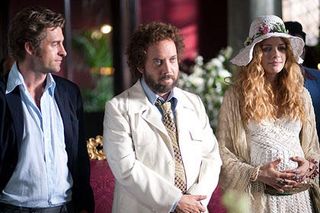
Absorbing, rich and blessed with a wonderfully dry sense of humour, Barney’s Version is a sophisticated treat.
Adapted from the prize-winning novel by Canadian author Mordecai Richler, it’s the sort of bleak comedy that Hollywood rarely has the guts to make anymore.
At its core is yet another titanic turn from Paul Giamatti, with a character that ranks alongside Harvey Pekar in American Splendor and Miles in Sideways .
He plays Barney Panofsky, a foul-mouthed US television producer who runs his own company Totally Unnecessary Productions, known for producing long-running soap ‘O’Malley of the North.’
While there are some in-jokes – David Cronenberg plays a director who snoozes on set, Denys Arcand cameos as Maître d’ – Barney’s Version is no insider look at showbiz.
In truth, Barney’s profession is secondary to his love life. Married three times, what we see is Barney’s version of events as he reflects on the mistakes he made.
Though nominally set in the present, with Barney now 65 years old, much of the film is seen in flashback as his the three relationships that defined his life unfold.
His first wife, the free-spirited, unfaithful Clara (Rachelle Lefevre) is not with us for long. Meeting her in Rome in 1974, after their baby is still born, she commits suicide.
The second spouse, known as Mrs. P (Minnie Driver, in excellent comic form), is a Jewish Princess who just doesn’t stop talking.
But it’s at their lavish wedding that he meets the love of his life, Miriam (Rosamund Pike), a New York DJ for a jazz station who Barney falls instantly in love with – so much so, he ducks out of his reception to pursue her.
As he says, much later on, “Have I ever given up when it comes to you?” And for all his bitterness and bad behaviour, Barney is also an incurable romantic, something that makes him fascinating to watch.
Giamatti doesn’t put a foot wrong here, convincing us with ease that Barney is a likeable fellow (without ever trying to ingratiate himself with the audience).
There’s also a glorious turn from Dustin Hoffman, who plays Barney’s father, a retired cop who seems as politically inappropriate as his son.
Directed by Richard J. Lewis, this is a major achievement for a director best known for his involvement in landmark television show, C.S.I .
And don’t be surprised if Giamatti walks away with the Best Actor prize here over the weekend.
Next: Earlier entries [page-break]
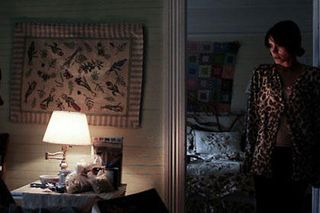
Mystifying in the extreme, veteran director Monte Hellman’s Road To Nowhere is a baffling film noir set in the world of moviemaking.
While Hellman may be best known for his cult road movie, Two Lane Blacktop , this latest effort treads a more oblique path – from the Smoky Mountains of North Carolina via, Rome, Verona and London.
If you were being cruel, you might say that it’s an apt title for a story that goes nowhere too – though there’s enough here to warrant a second (and hopefully more enlightening) viewing.
Admittedly, the prologue is spectacular – as star Shannyn Sossamon contemplates a lake view from her car, only to see a small plane crash into the water. So unexpected is it, the audience in the screening I saw burst into spontaneous applause.
Fake credits follow for a film-within-a-film, entitled ‘Road To Nowhere’. Bearing the legend, ‘A Mitchell Haven Picture’, it stars ‘Cary Stewart’ in a tale based on a true-life crime story about politics, corruption and suicide.
With Stewart (Cliff De Young) cast as leading man Rafe Tachen, the cocksure Haven (Tygh Runyan) is now looking to find his female protagonist, the wonderfully named Velma Duran.
Enter Lauren Graham (Sossamon), an actress with just one vampire flick to her name. Despite having the likes of Scarlett Johansson interested in the role, Haven wants her. “You are Velma Duran,” he says.
From the casting couch, they swiftly move to the bedroom – but from here on, the confusion really starts, with Hellman cutting between off-camera moments and scenes from Haven’s picture.
What’s real and what’s not become increasingly difficult to define – with the film reminding you of David Lynch’s Mulholland Drive , with its cocktail of sex and celluloid.
As you might expect for a film about filmmaking, there are some in-jokes. With the script written by Steven Gaydos, an executive editor at Variety , his colleague Peter Bart features as himself, interviewing Haven on camera.
Hellman also posts some blatant movie reference points – everything from Nicholas Ray’s classic noir In a Lonely Place to Preston Sturges’ The Lady Eve and Ingmar Begman’s The Seventh Seal .
If the story can be maddening for much of the time, it’s pleasing to see a strong lead for the oft-overlooked Sossamon, whose dark hair and beguiling brown eyes make her the perfect femme fatale .
Likewise, it’s also nice to see Dominique Swain (she of Adrian Lyne’s Lolita fame) on screen again – in a role that sees her play a blogger who becomes embroiled with the filmmakers.
While Road To Nowhere doesn’t come close to Hellman’s early classics, it’s such a strange viewing experience, it seems pre-ordained to gain a cult following – even if it will probably pass out of Venice unnoticed.
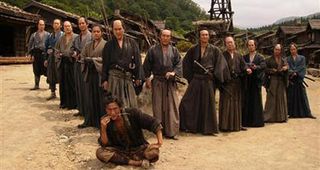
The highly prolific Japanese auteur Takashi Miike may well be the hardest working man in showbiz, with over 70 feature credits to his name in a twenty-year career.
His latest 13 Assassins is an ultra-violent samurai film, a remake of Eichi Kudo’s 1963 black-and-white movie, Jusan-Nin No Shikaku .
Set in feudal Japan, it begins with the rise to power of the sadistic Lord Naritsugu (Goro Inagaki), who rapes and kills with disturbing abandon.
Privately, the highly courageous and respected samurai Shinzaemon Shimada (Koji Yakusho) is called upon to defeat him.
To do so, he assembles a crack team of 13 assassins with the intention of ambushing Naritsugu and his massive entourage – in what can only be regarded as a certain suicide mission.
This band of blindly courageous warriors – a dirty baker’s dozen, you might say – do get some help, in the shape Koyota (Yusuke Iseya), a feral creature with a healthy disdain for all samurai.
What follows, as you might expect when Takashi Miike gets a samurai sword in his hand, is carnage on a massive scale. Or “total massacre” as they call it.
Some of the sequences are downright jaw dropping – in particular when several bulls are set on fire and used as flaming battering rams (don’t worry, animal lovers, it was all CGI).
Once the stabbing, slicing and chopping gets underway, there isn’t much below the surface of 13 Assassins , though Takashi’s approach is so relentless, you just get swept up in it.
By the time it ends, corpses littering the landscape as far as the eye can see, you can practically smell the stench of rotting flesh in the air.
It won’t win him any converts but fans of his uncompromising style will love it.
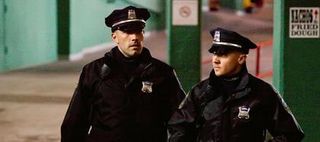
Arguably the biggest Hollywood film of the festival arrived today – Ben Affleck’s second film as director, bank robbery drama The Town .
Certainly there was a buzz in the press conference, as Affleck and British über-producer Graham King led the actors on stage.
Alongside Rebecca Hall and Jeremy Renner, the biggest round of applause was reserved for Jon Hamm, presumably due to his current popularity as the louche ad man Don Draper from Mad Men.
Affleck, back in Venice after winning Best Actor here for his turn as George Reeves in 2006’s Hollywoodland , led the charge in explaining just why his second effort as director after Gone Baby Gone was again set in Boston.
“I was a little bit hesitant to do this because I didn’t want to get pigeon-holed as the Boston-director guy,” said Affleck. “But I liked the part. I wanted to play the part. And I believed the story was good.”
Adapted from the novel Prince of Thieves by Chuck Hogan, this story is a solid, if a little unremarkable tale of professional bank robbers from the city’s Charlestown suburb.
Affleck, directing himself for the first time, plays Doug MacRay, the self-styled leader of the gang, which also features The Hurt Locker star Renner as loose-cannon Jem.
Hall is Claire, the manager of the bank that the gang robs at the outset who unwittingly becomes romantically embroiled with Doug, while Hamm is the FBI agent trying to track them down.
There’s also a nice turn from Gossip Girl ’s Blake Lively as MacRay’s former white trash girlfriend, now an alcohol and drug dependant single mother.
While it unfolds at a decent clip, the film that immediately leaps to mind is Michael Mann’s Heat , and The Town never comes close to that.
Of the three robberies that act as the film’s beginning, middle and end, it’s the middle-sequence – with the team dressed, bizarrely, as nuns – that injects some fierce adrenaline into proceedings.
Affleck does a better job as director than he does as actor though – proving just how smart he was to cast younger brother Casey in Gone Baby Gone .
Hamm, at least until he gets his scene with Blake Lively, is largely wasted, while Renner doesn’t quite fire on all cylinders.
Slick and glossy, there’s nothing wrong with The Town as a pure example of Hollywood entertainment. But it doesn’t live long in the memory.

Nine years on from winning the Oscar for Best Foreign Film for No Man’s Land , Danis Tanović returns to its Bosnian setting with his new film Cirkus Columbia .
Playing in the Venice Days strand of the festival, it’s set two years before No Man’s Land , in 1991, in the weeks running up to the war that tore the region apart.
Based on the novel by Ivica Đikić, it tells the story of Divko Buntic (Emir Kusturica regular Miki Manojlović), who returns to his home town after a 20 year absence.
With a sexy new girlfriend Azra (Jelena Stupljanin) in tow, he arrives to evict his estranged wife Lucija (Mira Furlan) and their 20 year-old son Martin (Boris Ler) from the family home.
Despite this, Divko makes an attempt to reach out to the son he barely knows, infuriating Lucija in the process, while his increasingly erratic behaviour starts to drive Azra away.
Amid all these squabbles – not least Divko losing his beloved cat Bonny – the clouds of war gather in the background, as the Serbs start to bomb Dubrovnik and the townsfolk are forced to take sides.
While No Man’s Land was a parable, dealing with two enemy soldiers trapped with each other, Cirkus Columbia is more of a domestic drama that alleviates the darkness with some finely judged moment of humour.
Tanović’s script, co-written with Đikić, builds up gradually, blending the personal and the political with a natural rhythm that never feels contrived.
By the finale, as Divko finds it in his heart for an act of generosity that’s somewhat out of character, you’re left with a tremendously moving piece that quietly reflects the madness of war.
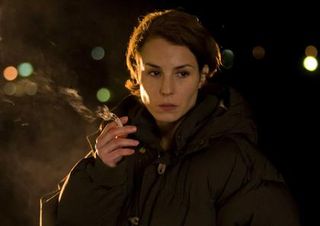
The girl with the dragon tattoo is back – and her scars are clearly still there.
Swedish star Noomi Rapace, best known for her portrayal of Lisbeth Salander in the ‘Millennium’ trilogy, has been on the Lido promoting Beyond , a bleak tale of domestic abuse and alcoholism.
The sort of film that should come with a prescription for anti-depressants, it marks the directorial debut of Pernilla August (known to millions as Anakin Skywalker’s mother in The Phantom Menace ).
Rapace plays Leena, a mother-of-two with a devoted husband, Johan (played by Rapace’s real-life husband, Ola).
When she receives a call from the hospital one morning just before Christmas, informing her that her mother is dying, it triggers a series of memories she’s long since buried.
Flashing back to her childhood, we learn that she and her younger brother Flisan grew up with a Finnish father, Kimmo (Ville Virtanen), who frequently took his alcohol-fuelled rages out on their mother Aili (Aki Kaurismäki regular Outi Mäenpää).
Cutting between the past and present, as Leena journeys across country to see her ailing mother, August builds up a picture of a childhood you wouldn’t wish on your worst enemy.
While Kimmo and Aili live like a more violent version of Wayne and Waynetta Slob, its little wonder that Flisan retreats into his shell and becomes a virtual mute while Leena is left to clear up her drunken father’s excrement from the kitchen floor.
Indeed, August’s depiction of this dysfunctional family make the clan in fellow Swede Lukas Moodysson’s A Hole In My Heart look like the Waltons.
Uncompromising and fearless, there’s a typically tough turn from Rapace, whose breakdown near the finale is as mesmerizing as it is heart-wrenching.
As for August, who came to prominence in Ingmar Bergman’s Fanny and Alexander , you might say she’s done her old mentor proud.
Next: More Venice 2010 [page-break]
Interwoven with this are scenes of Kevin dealing with a dead girl (Hope Tomeselli) – propping up her corpse at one point to take photographs – which is never fully explained.
There are isolated moments that grab your attention – such as the scene where Kevin rages against Mallory for calling Colette behind his back or the tender almost-kiss that they share.
To be fair, Balfort, a Belgium-born supermodel, comes out of the film with some credibility – even if Gallo allows his camera to leer over her naked body in a scene of clinical creepiness towards the end.
But, sad as it is to say, Gallo isn’t quite the one-man band he thinks he is. Perhaps his fine debut Buffalo ’66 was a flash in the pan after all.
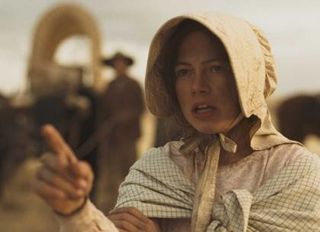
“This is going to be a slow burner,” a pre-warned colleague informed me, moments before the lights went down on Kelly Reichardt’s Meek’s Cutoff .
He wasn’t kidding. Think of a tortoise tiptoeing through treacle and you may get close to describing the pace of this 19th Century Oregon-set western.
Of course, Reichardt is no novice. If the energy of the film could be described as leisurely, it’s only because it accurately reflects a way of life 150 years ago.
The story sees three families traveling across the Oregon Trail in covered wagons, being led by experienced mountain man Stephen Meek (Bruce Greenwood).
From the moment one carves ‘Lost’ into the side of a wagon, you know things aren’t going to end happily – though Meek insists “We’re not lost, we’re finding our way.”
Yet after a short-cut leads them into difficulties, discontent starts brewing – in particular via the forthright Emily (Michelle Williams, the lead in Reichardt’s last film Wendy and Lucy ).
Events do, however, gather momentum in the second half – partly because the water supply is running dangerously short, partly because Meek captures a scout from the Cayuse tribe (Rod Rondeaux).
In a film where just two shots are fired (little wonder, given how long it takes to load the barrels), Reichardt’s understanding of this era is far removed from the Wild West of Sam Peckinpah.
But while the film may be short on action, its director knows exactly how to eek out tension – notably when the families are trying to gradually lower a wagon down a steep slope, with every creek of the wheels utterly agonizing.
Featuring a credible support cast (Shirley Henderson, Paul Dano and Will Patton), who all look suitably dirty and disheveled, the film reeks of authenticity throughout.
But what really impresses is Reichardt’s feel for the Great American landscape – a skill we’ve already seen to some extent in Wendy and Lucy and its predecessor Old Joy .
Shot in the 1.33 aspect ratio, which presents the harsh and dusty desert vistas in a square frame, natural light illuminates the scenes, lending a suitably bleak look to proceedings.
Yes, its old fashioned. But expertly crafted, Meek’s Cuttoff is the work of a major filmmaker whose just found a larger canvas to paint on.
Next: More Venice 2010 [page-break]

Now almost half way through the festival, Tran Anh Hung’s Norwegian Wood must be one of the strong contenders for the Golden Lion.
Adapted from the 1987 novel by Japanese author Haruki Murakami, it’s a beautifully crafted story of life, love and death set in Tokyo in the late 1960s, at a time of great political upheaval.
The story follows Watanabe (Kenichi Matsuyama) and Naoko (Rinko Kikuchi), student lovers bonded over the tragic suicide of their friend from years earlier.
Yet when the outgoing Midori (Kiko Mizuhara) walks into their lives, Watanabe’s head is turned and he finds himself with a heart-wrenching choice.
If this love-triangle sounds all-too-common, the attention to detail that Vietnamese director Hung brings to the narrative makes it a compelling watch.
Admittedly it’s slow – sometimes gruellingly so – but it’s so beautifully shot by Mark Lee Ping Bin, every frame radiating craftsmanship, that it’s hard not to fall for it.
Curiously, there’s even a British input, from Jonny Greenwood, Radiohead’s floppy-haired guitarist (the band’s classic ‘Creep’ previously featured in Hung’s 1995 Golden Lion winner Cyclo ).
While it doesn’t quite match the majesty of his work on Paul Thomas Anderson’s There Will Be Blood , he still conjures a score of tremendous power, one that alternates between tenderness and fear.
Greenwood’s contributions even stretch as far as suggesting the German band Can, who feature on the soundtrack.
And, yes, you do get to hear that wonderful Beatles’ track that inspired the title. As John Lennon once sung, ‘Isn’t it good? Norwegian Wood.’ You bet it is.
Next: More Venice 2010 [page-break]

The last time Sofia Coppola was in Venice, it was proved a very happy experience. Lost in Translation captivated audiences and set her on a path to an Oscar.
Her new film Somewhere certainly bears comparison. Another story about loneliness, also set in a hotel, again there’s a whiff of autobiography about it.
While Lost in Translation felt like an oblique commentary on Coppola’s marriage to Spike Jonze, this could be read as a nod to her relationship with her famous film director father, Francis.
You also can’t help but wonder which Hollywood star the main protagonist, adrift A-list actor Johnny Marco (Stephen Dorff), is modelled on.
Living out an empty existence in the Chateau Marmont hotel, when we first meet Johnny, his idea of entertainment is hiring two blonde pole dancers to perform in his room.
Everywhere he goes, women from his past seem to float by (and you have to wonder if it’s a scorned one-night stand who keeps sending him abusive anonymous text messages).
His is a very unreal existence – until his 11 year-old daughter Cleo (Elle Fanning) arrives to stay with him while her mother disappears to take some time for herself.
As they gradually begin to bond, Johnny comes to realise just how shallow his life is – emphasized in one of Coppola’s less subtle moments when the pair play The Police’s ‘So Lonely’ on Guitar Hero.
That’s not to say Somewhere isn’t funny. Coppola has a sly sense of humour – and the moment where Johnny is forced to fend off dim-witted questions (“Would you like to go to China?”) at a press conference certainly resonated with all the hacks in the audience.
Though less stylized than her earlier work, Somewhere is still recognizably a Coppola film, with its sparse dialogue, too-cool-for-school soundtrack, and familiar themes of isolation.
Having touched on the notion of fame before, when he played Fifth Beatle Stuart Sutcliffe in Backbeat, Dorff is excellent in a role he was clearly born to play, never over-selling the character to us.
What might disappoint is that Coppola has hardly pushed herself towards breaking new boundaries – but then, arguably, she’s just not that sort of director.
In the press conference, she noted that her father saw the film and said to her, “You should always make the films only you can make.” Well, it looks like she has.
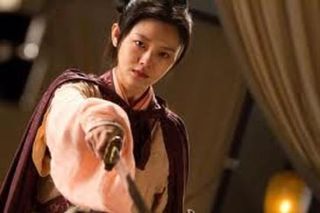
Today was John Woo day. I’m not sure what this means.
Were we all expected to dive around the Lido in slow-motion, while holding two guns and letting off endless rounds of bullets, as doves soared above us? I hope not, as I really didn’t have the time.
In fact, the director of The Killer and Face/Off is here to collect a lifetime achievement Golden Lion for a body of work that stretches back over four decades.
At least it gives the festival the chance to show Woo’s latest Reign of Assassins (co-directed with Su Chao-Pin), his second Chinese-set movie in a row after Red Cliff.
A wuxia-style martial arts actioner, and a concerted attempt to revive the Chinese swordplay genre, it stars Michelle Yeoh as a deadly assassin trying to atone for her sins and live a normal life.
In truth, after the likes of Ang Lee’s Crouching Tiger, Hidden Dragon , which also starred Yeoh, and Zhang Yimou’s House of Flying Daggers , while it’s made with considerable panache, Woo’s film feels overly familiar.
Characters bounce up and over walls (including one naked girl with just a wrap protecting her modesty) , swords stop within a hair’s breadth of an assailant’s eyeball, and Yeoh – now 48 – proves as agile as ever.
Woo aside, there’s a strong Asian presence here this year. We’ve already been treated to Infernal Affairs director Andrew Lau’s fast-flowing L egend of the Fist: The Return of Chen Zhen , which stars Donnie Yen as the mythical Hong Kong action hero (previously played by Bruce Lee and Jet Li).
And to come, Woo’s old compatriot Tsui Hark will be presenting Detective Dee , in which Andy Lau plays an exiled detective who returns to solve a series of mysteries that threaten to delay the inauguration of Empress Wu.
But today – a day when the Heavens opened with one of the most vicious storms the Lido has ever seen – belongs to John Woo.
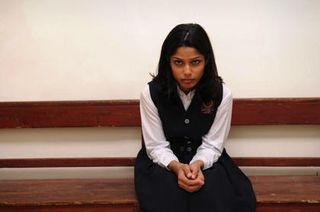
After the might of his last film, The Diving Bell and The Butterfly , Julian Schnabel’s latest Miral has to go down as a disappointment.
Adapted from her own book by Rula Jebreal, it tells the true story of three generations of women living in Jerusalem, just as the Israeli-Palestine conflict fills their everyday lives with violence and pain.
It begins in 1947, when the kindly Hind Husseini ( The Visitor ’s Hiam Abbas) discovers 55 orphan Palestinian children walking the streets and takes them in.
Within six months, the numbers have swelled to 200 – and Husseini’s house has become the Dar Tifl Al-Arabi Institute. “My goal is to educate these kids,” she says, “and give them hope.”
After a brief sequence set in ’67, at the time of the 6 Day War, the plot switches to one of Husseini’s charges, the 7 year-old Miral (Yolanda El-Karam), whose story dominates the second half of the film.
With her name meaning “small red flower,” there to emphasize the universality of her story, she arrives at Husseini’s establishment after the death of her mother.
Skipping on a decade to 1987, Miral (now played by Freida Pinto) is caught up in the political conflict that rages outside the sanctuary of the Institute – not least after she falls for a political activist.
While the director’s intentions are clearly honourable – he dedicates the movie to those in search of peace – the film is beset by problems, notably with the characters often feeling like mouthpieces for political soundbites.
Slumdog Millionaire star Pinto also seems miscast as Miral (although she does the best she can with a role that leaves her stranded). And there are strangely pointless cameos for Willem Dafoe and Vanessa Redgrave.
While Abbas is warm and moving in her role, it doesn’t help that her wig, when she plays the aging Husseini in the 1987 segment, makes her look like Norman Bates’ ‘mother’ in Psycho .
There are touches of Schnabel’s sharp visual style – the camera bouncing up and down on a bed, for example, as it simulates the rape of one character. There’s also an intriguing use of Roman Polanski’s Replusion , during a terrorist attack.
But with Schnabel deploying stock footage to give us a potted history of the region, it feels like he attempts to cover far too much ground.
Adapted from the play by Wajdi Mouawad, which was partly inspired by the war that shattered Lebanon in the 1970s, the story begins as twins Jeanne (Mélissa Désormeaux-Poulin) and Simon (Maxim Gaudette), who’ve been raised in Canada, discover their late mother’s final wish.
Given two envelopes – one for their father they thought was dead, one for a brother they never knew existed – they are entrusted to seek out the recipients and deliver the letters before they are allowed to engrave their mother’s tombstone.
As their notary puts it, “Death is never the end of the story. It always leaves traces” – a statement that grows in truth as both siblings journey to the war-torn tiny village where their mother grew up to try and find their father and brother.
Cutting between their detective work and scenes of their mother Nawal (Lubna Azabal) before they were born, what follows is a rich and complex mix of the personal and the political that is as shocking as it is engrossing.
While it would be unwise to give too much away, Nawal’s own journey is harrowing to say the least – from the moment she is berated by her grandmother for being pregnant to the scene where her bus is attacked by right-wing Christian militias.
In truth, the film’s ultimate revelation is a little hard to swallow (impossible to explain here without giving it all away), and threatens to undo much of the good work that has gone before it.
But Villeneuve keeps the past-present structure in perfect balance, aided by a string of first-rate performances – in particular Azabal, previously best known for her work in the 2006 film Paradise Now .
It feels like the film Schnabel should’ve made.
Next: Day Zero - Day One [page-break]
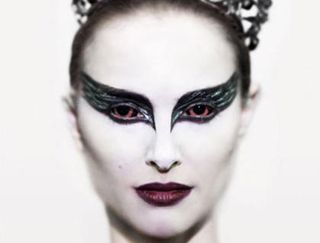
Clever, chilling and above all compelling, Darren Aronofsky’s Black Swan marks the perfect start to this year’s Venice.
Last time Aronofsky was on the Lido, The Wrestler walked away with the Golden Lion. This time, he has the honour of opening the festival.
Yet Black Swan couldn’t be further away from the tear-stained heartbreak of The Wrestler . If anything, it’s the closest thing he’s made to his sophomore film, Requiem For a Dream .
A psychological thriller set in the world of the ballet, if Robert Altman’s The Company had been re-made by David Cronenberg that might come close to describing Black Swan.
In the lead is Natalie Portman, in arguably her most mature role to date. She plays Nina, a New York ballerina who lands the plum role of the Swan Queen in her company’s new production of Swan Lake.
A fragile innocent who still lives at home, her bedroom overflowing with fluffy toys, Nina may be perfect casting as the White Swan.
But, as her manipulative artistic director (Vincent Cassel) puts it, “the real work will be your metamorphosis into her evil twin”.
Aronofsky gradually essays this transformation, at times brilliantly, as Nina increasingly allows the role to get under her skin.
It doesn’t help that in Lily (Mila Kunis), a rebellious newcomer to the company, Nina has her “evil twin” right there, ready to lead her astray into the Manhattan night.
As the pressure begins to tell, Nina starts hallucinating – whether its paintings moving, tattoos shimmering or her own skin peeling off before her very eyes.
Portman is marvelous in meltdown mode, a perfect mixture of the prim and the paranoid, as she lives up to her mother’s suggestion that “this role is destroying you”.
But there are other great turns too. Cassel is wonderful slimy and, in little more than a cameo, Winona Ryder is deeply unsettling as Nina’s embittered predecessor.
The result is a triumphant piece from Aronofsky – part horror, part coming-of-age drama – that more than merits its opening night berth.
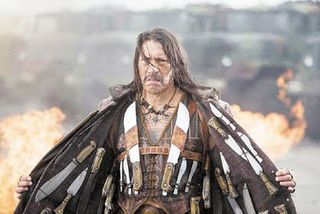
If the pen is mightier than the sword, clearly nobody told Robert Rodriguez. Machete kicks serious ass from start to finish.
It won’t hold too many surprises for those who saw the fake trailer that featured in Grindhouse , the Rodriguez-Quentin Tarantino B-movie double-bill.
Rodriguez regular Danny Trejo finally takes centre stage (and about time, I’d say) as the machete-boasting Mexican who fights the good fight.
There’s even room for Cheech Marin, who featured in the original trailer as the shotgun-heavy Padre with the killer line, “God has mercy. I don’t.”
But a single trailer does not a film make, and Rodriguez has expanded this one-note idea into a hilarious ‘Mexploitation’ movie that feels like the perfect partner to his Grindhouse entry Planet Terror .
The hilarious prologue sets the tone, as Machete busts in to rescue a girl (naked, of course), by hacking any head, arm or leg that gets in his way with his lethal weapon.
It doesn’t stop there as blood splatters across the screen with alarming regularity – the stand-out grisly moment arguably coming when Machete uses one luckless assailant’s intestine as a rope swing.
Yet Machete isn’t all cartoon sex-and-violence – with its plot seeing a Texas senator (Robert De Niro) determined to build an electrified fence along the Mexican border to keep out illegal immigrants.
Featuring Jessica Alba as an immigration officer who teams up with Machete, much of the cast is deliciously retro – everyone from Steven Seagal as a Mexican druglord to Don Johnson as a gun-happy sheriff and Jeff Fahey as a ruthless businessman.
While it feels like The Expendables rather stole Rodriguez’s thunder there, he does get to offer redemption for off-screen bad-girls Michelle Rodriguez and Lindsay Lohan, who gets a particularly memorable moment involving a nun’s habit and a .44 Magnum.
But the true star is Trejo. He may be more crinkled than a bag of prunes, but he’s spot-on as this new kind of superhero.
As the finale says, ‘Machete Will Return’. After this effervescent effort, let’s hope Rodriguez isn’t joking.
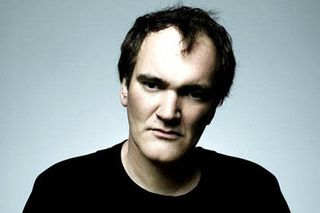
Greetings from the Lido! As Total Film gears up to bring you our coverage of the 67th Venice Film Festival, the signs are good.
For starters, it seems like jury head Quentin Tarantino has stuck his oar in. His old mate Robert Rodriguez provides one of three opening films, in the shape of Grindhouse-trailer-turned-feature Machete .
Meanwhile, Tarantino’s old favourite John Woo is receiving a Golden Lion for lifetime achievement, which means public screenings of Woo classics The Killer and A Better Tomorrow (woo-hoo!).
What else to look out for? Well, the official opening film, Darren Aronofsky’s Black Swan , a psychological thriller set in the world of the New York ballet, is a must-see.
Ben Affleck’s second directorial effort, and his second Boston-set crime drama, The Town looks intriguing, as does Sofia Coppola’s potentially indulgent Somewhere , starring Stephen Dorff and Elle Fanning.
I also can’t wait to see Monte Hellman’s Road to Nowhere , a new film from the maestro behind such ’70s classics as Two Lane Blacktop and Cockfighter .
Most intriguing film will surely be I’m Still Here , Casey Affleck’s documentary about Joaquin Phoenix’s transition from actor to rapper.
And with Vincent Gallo back with his new film Promises Written In Water (as well as an appearance in Essential Killing ), controversy won’t be far away.
It all adds up to a tasty-looking selection. Stay tuned for daily reports.
James Mottram is a freelance film journalist, author of books that dive deep into films like Die Hard and Tenet, and a regular guest on the Total Film podcast. You'll find his writings on 12DOVE and Total Film, and in newspapers and magazines from across the world like The Times, The Independent, The i, Metro, The National, Marie Claire, and MindFood.
